Don't wanna be here? Send us removal request.
Text
know Python.
A Look into the Python Programming Language
Introduction
Python has become a dominant force in the world of programming. This versatile language is lauded for its readability, extensive libraries, and vast applications. This article delves into the history of Python, explores the reasons why it's a valuable skill to learn, and examines its impact on the world today and tomorrow.
History
Guido van Rossum, a Dutch programmer, designed Python in the late 1980s. His goal was to create a language that was both powerful and easy to learn, emphasizing code readability. Inspired by the humor group Monty Python, he named the language after them. Python's first official release came in 1991, and it has grown steadily in popularity ever since.

Why Learn Python?
There are numerous reasons why Python is a great language to pick up. Here are a few key points:
Readability: Python's syntax is clear and concise, resembling natural language. This makes it easier to learn and maintain code compared to languages with complex syntax.
Versatility: Python is a general-purpose language, meaning it can be used for a wide range of tasks. From web development and data science to machine learning and automation, Python excels in numerous domains.
Extensive Libraries: The Python ecosystem boasts a vast collection of libraries and frameworks. These pre-written tools provide users with functionalities for specific tasks, saving development time.
Large Community: Python has a vibrant and supportive online community. This means there's an abundance of resources and help available for learners and experienced programmers alike.
Python's Global Reach
Python's influence extends far and wide. Here are some examples of how countries around the world are leveraging Python's power:
The United States: Tech giants like Google, Facebook, and Netflix utilize Python for various purposes, including web development, data analysis, and machine learning.
India: Python is a popular choice for software development and data science in India, a country experiencing a major tech boom.
China: China's tech sector is also embracing Python, particularly in areas like artificial intelligence and scientific computing.
The Future of Python
With its adaptability and ease of use, Python is well-positioned for a prominent role in the future of technology. Here are some potential areas where Python might play a key role:
Artificial Intelligence (AI): Python's established libraries like TensorFlow and PyTorch make it a go-to language for developing AI applications.
Data Science and Machine Learning: Python's data manipulation and analysis capabilities will continue to be crucial for these rapidly evolving fields.
Internet of Things (IoT): As more devices become interconnected, Python's potential for scripting and automating tasks within IoT systems will be increasingly valuable.
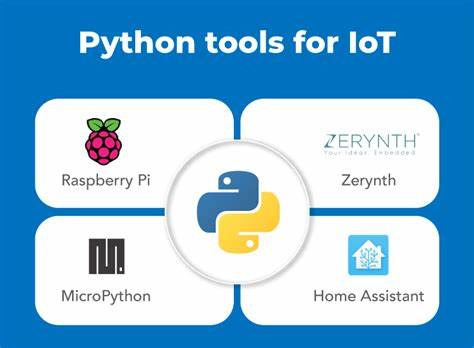
Recent Advancements with Python
Python has been instrumental in the development of several cutting-edge technologies. A few notable examples include:
Self-Driving Cars: Python plays a role in developing the control systems and machine learning algorithms used in self-driving cars.
Facial Recognition Software: Python libraries are used to create and train facial recognition systems.
Natural Language Processing (NLP): Python is a popular choice for developing NLP applications, such as chatbots and machine translation tools.

Working Structure
Source Code:
You write Python code in plain text files with the .py extension. This code is human-readable, resembling natural language for easy understanding and modification.
Compilation (Bytecode):
Unlike some languages that directly translate to machine code, Python utilizes an intermediate step. The Python compiler converts your source code into bytecode, a lower-level representation. Bytecode files typically have the .pyc or .pyo extension.
Python Virtual Machine (PVM):
The bytecode can't be directly executed by your computer's hardware. The Python Virtual Machine (PVM) acts as an interpreter, reading and executing the bytecode instructions. The PVM manages memory allocation and provides an environment for your code to run.
Libraries and Modules:
Python boasts a rich collection of pre-written code called libraries and modules. These modules contain functions, classes, and variables that provide functionalities for various tasks. You can import these modules into your code to leverage their capabilities, saving development time.
Execution:
When you run a Python script, the interpreter reads the bytecode line by line. It executes the instructions, interacting with libraries and modules as needed. The output of your code is then displayed on the console or used within the program itself.
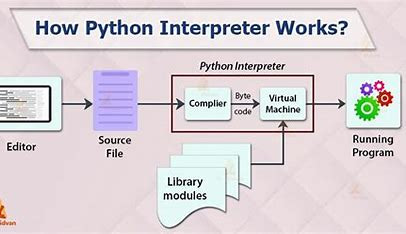
Conclusion
Python's impact on the technological landscape is undeniable. Its readability, vast ecosystem of libraries, and diverse applications make it a language well worth learning. As technology continues to evolve, Python is sure to remain a powerful tool that shapes the future.
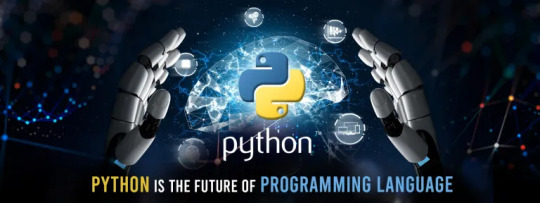
0 notes
Text
Java training course
Java course
Java Platform, Standard Edition (Java SE) is a computing platform for development and deployment of portable code for desktop and server environments.Java SE was formerly known as Java 2 Platform, Standard Edition (J2SE).
The platform uses the Java programming language and is part of the Java software-platform family. Java SE defines a range of general-purpose APIs—such as Java APIs for the Java Class Library—and also includes the Java Language Specification and the Java Virtual Machine Specification. OpenJDK is the official reference implementation since version 7.
Nomenclature, standards and specifications:
The platform was known as Java 2 Platform, Standard Edition or J2SE from version 1.2, until the name was changed to Java Platform, Standard Edition or Java SE in version 1.5. The "SE" is used to distinguish the base platform from the Enterprise Edition (Java EE) and Micro Edition (Java ME) platforms. The "2" was originally intended to emphasize the major changes introduced in version 1.2, but was removed in version 1.6. The naming convention has been changed several times over the Java version history. Starting with J2SE 1.4 (Merlin), Java SE has been developed under the Java Community Process, which produces descriptions of proposed and final specifications for the Java platform called Java Specification Requests (JSR).[6] JSR 59 was the umbrella specification for J2SE 1.4 and JSR 176 specified J2SE 5.0 (Tiger). Java SE 6 (Mustang) was released under JSR 270.
Java Platform, Enterprise Edition (Java EE) is a related specification that includes all the classes in Java SE, plus a number that are more useful to programs that run on servers as opposed to workstations.
Java Platform, Micro Edition (Java ME) is a related specification intended to provide a certified collection of Java APIs for the development of software for small, resource-constrained devices such as cell phones, PDAs and set-top boxes.
The Java Runtime Environment (JRE) and Java Development Kit (JDK) are the actual files downloaded and installed on a computer to run or develop Java programs, respectively.
J2EE Specifications
Jakarta EE includes several specifications that serve different purposes, like generating web pages, reading and writing from a database in a transactional way, managing distributed queues.
The Jakarta EE APIs include several technologies that extend the functionality of the base Java SE APIs, such as Jakarta Enterprise Beans, connectors, servlets, Jakarta Server Pages and several web service technologies.
Web specifications
Jakarta Servlet: defines how to manage HTTP requests, in a synchronous or asynchronous way. It is low level and other Jakarta EE specifications rely on it;
Jakarta WebSocket: API specification that defines a set of APIs to service WebSocket connections;
Jakarta Faces: a technology for constructing user interfaces out of components;
Jakarta Expression Language (EL) is a simple language originally designed to satisfy the specific needs of web application developers. It is used specifically in Jakarta Faces to bind components to (backing) beans and in Contexts and Dependency Injection to named beans, but can be used throughout the entire platform.
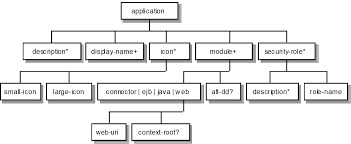
Web service specifications
Jakarta RESTful Web Services provides support in creating web services according to the Representational State Transfer (REST) architectural pattern;
Jakarta JSON Processing is a set of specifications to manage information encoded in JSON format;
Jakarta JSON Binding provides specifications to convert JSON information into or from Java classes;
Jakarta XML Binding allows mapping XML into Java objects;
Jakarta XML Web Services can be used to create SOAP web services.
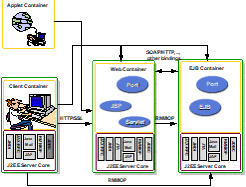
Enterprise specifications
Jakarta Activation (JAF) specifies an architecture to extend component Beans by providing data typing and bindings of such types.
Jakarta Contexts and Dependency Injection (CDI) is a specification to provide a dependency injection container;
Jakarta Enterprise Beans (EJB) specification defines a set of lightweight APIs that an object container (the EJB container) will support in order to provide transactions (using JTA), remote procedure calls (using RMI or RMI-IIOP), concurrency control, dependency injection and access control for business objects. This package contains the Jakarta Enterprise Beans classes and interfaces that define the contracts between the enterprise bean and its clients and between the enterprise bean and the ejb container.
Jakarta Persistence (JPA) are specifications about object-relational mapping between relation database tables and Java classes.
Jakarta Transactions (JTA) contains the interfaces and annotations to interact with the transaction support offered by Jakarta EE. Even though this API abstracts from the really low-level details, the interfaces are also considered somewhat low-level and the average application developer in Jakarta EE is either assumed to be relying on transparent handling of transactions by the higher level EJB abstractions, or using the annotations provided by this API in combination with CDI managed beans.
Jakarta Messaging (JMS) provides a common way for Java programs to create, send, receive and read an enterprise messaging system's messages.
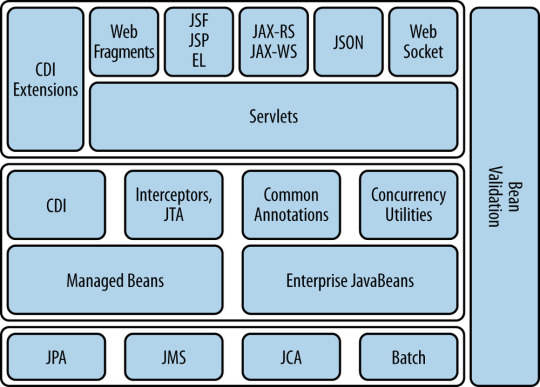
Other specifications
Validation: This package contains the annotations and interfaces for the declarative validation support offered by the Bean Validation API. Bean Validation provides a unified way to provide constraints on beans (e.g. JPA model classes) that can be enforced cross-layer. In Jakarta EE, JPA honors bean validation constraints in the persistence layer, while JSF does so in the view layer.
Jakarta Batch provides the means for batch processing in applications to run long running background tasks that possibly involve a large volume of data and which may need to be periodically executed.
Jakarta Connectors is a Java-based tool for connecting application servers and enterprise information systems (EIS) as part of enterprise application integration (EAI). This is a low-level API aimed at vendors that the average application developer typically does not come in contact with.

1 note
·
View note
Text
COST CENTER AND COST CATEGORY IN TALLY
1.COST CENTER
A cost center is nothing but a separate department within a business to which costs can be allocated. This also includes departments which do not produce directly but incur costs to the business. For example, the manager and employees of the cost center are not accountable for the profitability and investment decisions of the business but they are responsible for some of its costs.
2.COST CATEGORY
Cost categories are useful for organizations that require allocation of revenue and non-revenue items to parallel sets of cost centers. Cost categories facilitate third-dimensional reporting of expenditure and revenue. For example, region-wise or geography-wise, Grade-wise, Department-wise, cost categories.
You can use cost categories you can allocate, in parallel, a transaction to more than one set of cost centers. For example, Cost Centers such as Marketing, Finance and Manufacturing can now belong to a category - Departments.
The Salesmen A, B, and C can be Cost Centers under a Category - Executives.
Similarly, you can create a new Cost Category Projects under which Cost Centers such as airport construction, road construction and buildings may be created. The classification appears as following:
Cost Categories
1.Departments
2.Executives
3.Projects
Cost Centers
1.Marketing
2.Salesman A
3.Airport Construction
1.Manufacturing
2.Salesman B
3.Road Construction
1.Finance
2.Salesman C
3.Buildings
2 notes
·
View notes